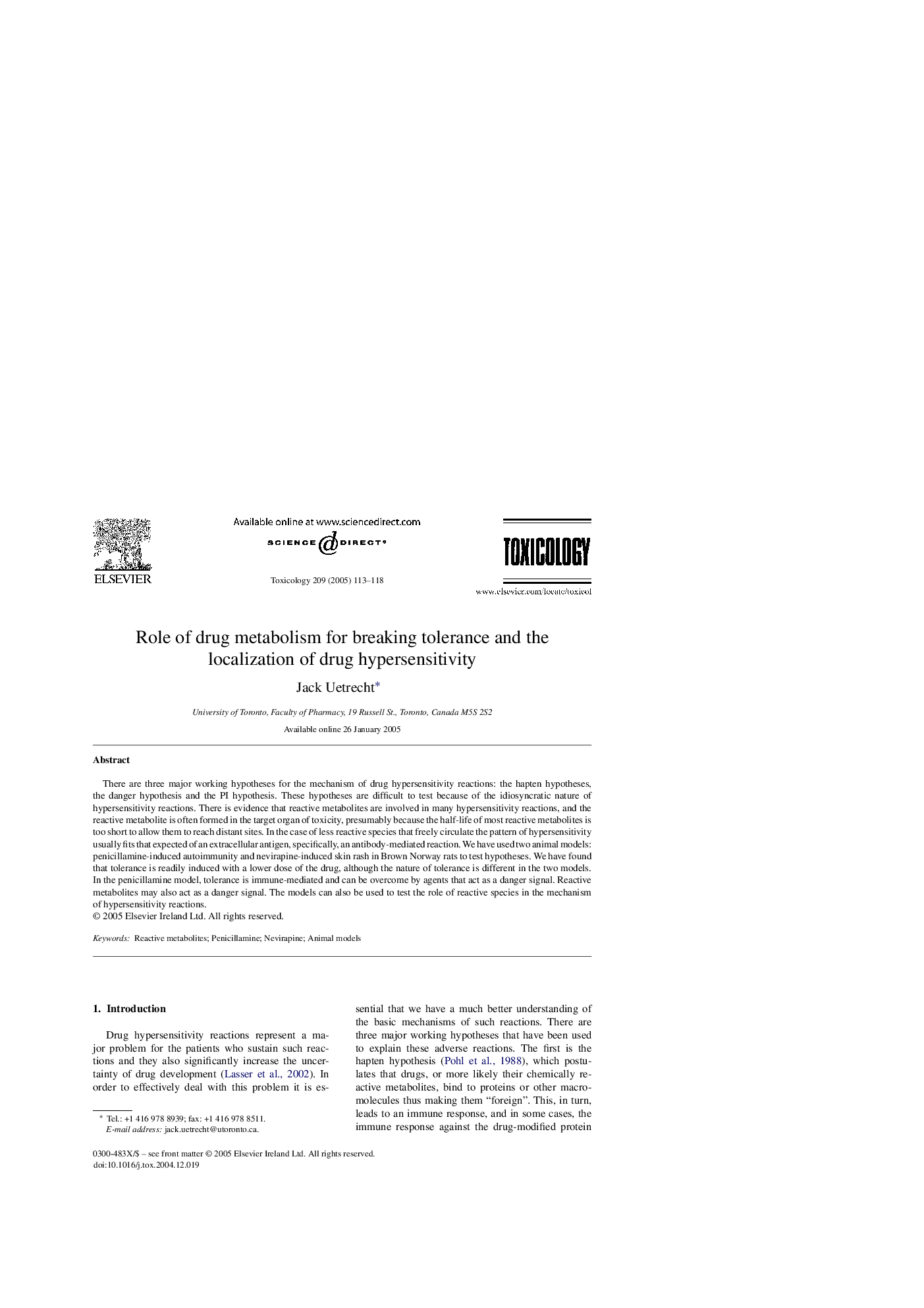| کد مقاله | کد نشریه | سال انتشار | مقاله انگلیسی | نسخه تمام متن |
|---|---|---|---|---|
| 9034534 | 1132620 | 2005 | 6 صفحه PDF | دانلود رایگان |
عنوان انگلیسی مقاله ISI
Role of drug metabolism for breaking tolerance and the localization of drug hypersensitivity
دانلود مقاله + سفارش ترجمه
دانلود مقاله ISI انگلیسی
رایگان برای ایرانیان
کلمات کلیدی
موضوعات مرتبط
علوم زیستی و بیوفناوری
علوم محیط زیست
بهداشت، سم شناسی و جهش زایی
پیش نمایش صفحه اول مقاله

چکیده انگلیسی
There are three major working hypotheses for the mechanism of drug hypersensitivity reactions: the hapten hypotheses, the danger hypothesis and the PI hypothesis. These hypotheses are difficult to test because of the idiosyncratic nature of hypersensitivity reactions. There is evidence that reactive metabolites are involved in many hypersensitivity reactions, and the reactive metabolite is often formed in the target organ of toxicity, presumably because the half-life of most reactive metabolites is too short to allow them to reach distant sites. In the case of less reactive species that freely circulate the pattern of hypersensitivity usually fits that expected of an extracellular antigen, specifically, an antibody-mediated reaction. We have used two animal models: penicillamine-induced autoimmunity and nevirapine-induced skin rash in Brown Norway rats to test hypotheses. We have found that tolerance is readily induced with a lower dose of the drug, although the nature of tolerance is different in the two models. In the penicillamine model, tolerance is immune-mediated and can be overcome by agents that act as a danger signal. Reactive metabolites may also act as a danger signal. The models can also be used to test the role of reactive species in the mechanism of hypersensitivity reactions.
ناشر
Database: Elsevier - ScienceDirect (ساینس دایرکت)
Journal: Toxicology - Volume 209, Issue 2, 15 April 2005, Pages 113-118
Journal: Toxicology - Volume 209, Issue 2, 15 April 2005, Pages 113-118
نویسندگان
Jack Uetrecht,